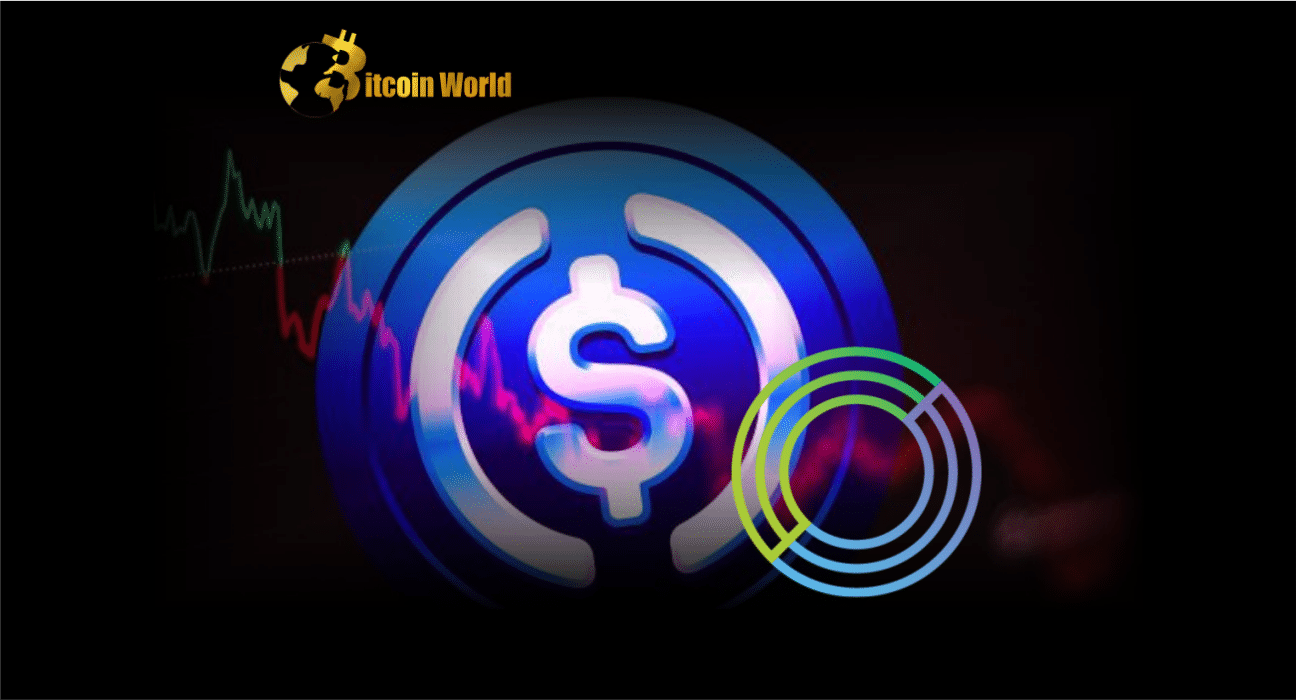Remember when the crypto world held its breath? Just days ago, the seemingly unshakeable USDC stablecoin, issued by Circle, wobbled. It momentarily lost its sacred peg to the US dollar, sending ripples of concern throughout the digital asset landscape. Investors reacted swiftly, and as Messari data reveals, a staggering 3.9 billion USDC has been removed from circulation since last Friday, leaving a still substantial 39.5 billion USDC in the market. While Circle has injected some fresh coins, it hasn’t matched the burn rate. What exactly happened, and what does it mean for the future of stablecoins and DeFi?
The Great USDC De-pegging: What Triggered the Panic?
The root of the turmoil? Circle’s exposure to the now-infamous Silicon Valley Bank (SVB). The near-collapse of SVB, a key banking partner, sent shockwaves through the USDC ecosystem. News that $3.3 billion of USDC reserves were held at SVB triggered a rapid decline. On the Kraken exchange, USDC plummeted to a low of $0.87 on Saturday. This dramatic event highlights a critical vulnerability: the reliance of even the most prominent stablecoins on traditional banking infrastructure.
However, there’s a silver lining. As USDC regained its peg, Circle announced a strategic move to shift its reserves to the banking giant BNY Mellon, aiming to bolster confidence and security.
CEXs Under Pressure: Trading Volumes Explode
The de-pegging event ignited a frenzy in the crypto markets, particularly on centralized exchanges (CEXs). These platforms, offering direct USD pairings, became the epicenter of trading activity. Kaiko data reveals an astonishing surge in daily transaction volume for USDC-USD pairs on CEXs, reaching an all-time high of $600 million on Saturday. To put this into perspective, the average daily volume in the preceding week was a mere $20–$40 million. That’s a massive increase!
But this surge exposed the limits of CEX infrastructure. As Kaiko pointed out, the exchanges “could not withstand the increase in sell volume, which led USDC’s exchange rate to nosedive.” This underscores the importance of robust infrastructure to handle extreme market volatility, especially during times of crisis.
DeFi to the Rescue? DEXs See Record Volumes and Arbitrage Bonanza
While CEXs grappled with the selling pressure, decentralized exchanges (DEXs) like Uniswap and Curve stepped into the spotlight. Traders, seeking to swap USDC for other assets like Ether (ETH) and Tether (USDT), flocked to these platforms. Amidst the de-pegging chaos, Uniswap and Curve witnessed record-breaking trade volumes over the weekend. Kaiko reports that the USDC-USDT trading pair alone saw nearly $6 billion in volume on Curve and Uniswap V3.
This volatility created a goldmine of arbitrage opportunities within the DeFi ecosystem. According to Kaiko, protocols like Aave and Compound experienced a surge in loan repayments, exceeding $2 billion. Borrowers strategically repaid loans, often in USDC, at a discount, capitalizing on the price discrepancies caused by the de-pegging. Riyad Carey, Research Analyst at Kaiko, aptly noted that the USDC fears will likely “hang over markets for a long time,” speaking to the lasting impact of such events on market sentiment.
The Lingering Questions: What’s Next for Stablecoins?
Despite USDC regaining its peg, the event has raised crucial questions about the stability and future of stablecoins. As Riyad Carey suggests, we may not have seen the end of USDC redemptions. The lack of a readily available, widely trusted alternative DeFi-centric stablecoin to replace USDC further complicates the landscape.
Jeff Dorman, CIO of Arca, a digital asset investment firm, offered a more optimistic, albeit cautious, perspective in a recent newsletter. He estimates that a significant portion of USDC’s assets under management – potentially $10-$20 billion – might be redeemed. However, Dorman also believes USDC has the potential to recover and even grow its assets if it successfully navigates this stress test. He highlights the backing of USDC by entities like Circle, Coinbase, and traditional banking partners, suggesting inherent strength.
Coin Metrics, in their weekly blog, succinctly captured a key takeaway: “the hazards posed by excessive reliance on centralized infrastructure.” This USDC event serves as a stark reminder and a valuable lesson for the future development and adoption of stablecoins and the broader DeFi ecosystem.
Key Takeaways from the USDC De-pegging Event:
- Centralized Risk: The event underscored the risks associated with stablecoins’ reliance on traditional banking and centralized infrastructure.
- Market Volatility Amplification: De-pegging events can trigger significant market volatility and rapid shifts in asset flows.
- DeFi Resilience: DEXs and DeFi protocols demonstrated resilience and played a crucial role in managing the crisis, offering trading and arbitrage opportunities.
- Arbitrage Opportunities: Volatility creates arbitrage opportunities within DeFi, benefiting savvy traders and impacting protocol activity.
- Trust and Transparency: The event emphasizes the need for greater transparency and robust risk management in the stablecoin sector to maintain user trust.
- Future of Stablecoins: The industry needs to explore more decentralized and resilient stablecoin models to mitigate risks associated with centralized dependencies.
Looking Ahead
The USDC de-pegging event was a significant stress test for the stablecoin market and the DeFi ecosystem. While USDC has recovered, the tremors are still being felt. It’s a crucial moment for reflection and innovation. Will we see a shift towards more decentralized stablecoin models? Will this event lead to greater regulatory scrutiny? One thing is certain: the lessons learned from this episode will shape the future of stablecoins and the evolution of decentralized finance. The industry must prioritize building more resilient, transparent, and decentralized systems to ensure long-term stability and user confidence in the digital asset space.
Disclaimer: The information provided is not trading advice, Bitcoinworld.co.in holds no liability for any investments made based on the information provided on this page. We strongly recommend independent research and/or consultation with a qualified professional before making any investment decisions.


